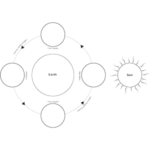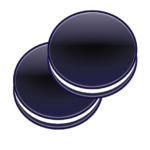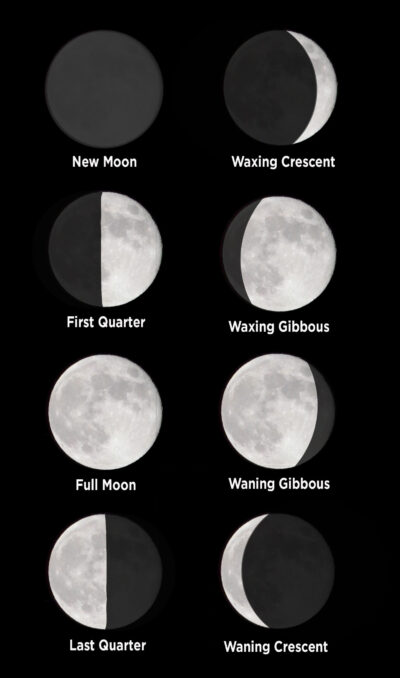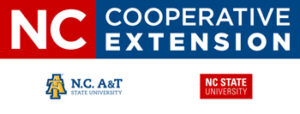The Moon’s the North Wind’s Cooky
The Moon’s the North Wind’s cooky
He bites it, day by day,
Until there’s but a rim of scraps
That crumble all away.
The South Wind is a baker.
He kneads clouds in his den,
And bakes a crisp new moon that . . . greedy
North . . . Wind . . . eats . . . again!
–Vachel Lindsay
We know that the moon isn’t really a cookie, but what happens to it every month? What causes the phases (changes) we see for the moon?
The moon is a giant ball of rock that orbits (goes around) the Earth. It takes the moon about 28 days to go all the way around the Earth. We call this trip the lunar cycle. You could think of the moon like the Earth’s best friend since they travel together when the Earth orbits the sun.
We can see the moon at night, but the moon does not have its own light. Instead, the moon reflects light from the sun. Think about a mirror: if you look in a mirror, you see your reflection. The moon acts like a mirror for the sun by reflecting its light back.
Depending on where the moon is in the lunar cycle, the moon could be lined up between the Earth and the sun (new moon), lined up next to the Earth (quarter moon), or lined up outside the Earth and the sun (full moon).
The First Experiment
Try this: You will need a ball, a flashlight, a copy of the Moon Phase Workspace, a black crayon, and a helper to do this activity. The ball is the “moon” and the flashlight is the “sun”.
STEP 1
Take materials into a dark room. Stand about two arms’ lengths from your helper.
STEP 2
Give the flashlight to your helper. You will hold the ball straight out in front of you, just above your forehead. Your helper will hold the flashlight at the same height. The ball should be between you and the flashlight to begin the experiment.
STEP 3
Have your helper turn on the flashlight. What does the ball look like? What phase of the moon does this represent? Color to show the phase on your Moon Phase Workspace.
STEP 4
Slowly turn counterclockwise, keeping the ball in front of you. Your helper should not move. What do you notice about the shadows as you turn? Color your Moon Phase Workspace.
The Second Experiment
Use chocolate sandwich cookies and the Moon Phase Workspace to model (show) the phases of the moon.
Materials
Moon phases workspace (See downloadable PDF at top of lesson page)

Chocolate sandwich cookies

Directions
STEP 1
Find the Moon phase chart attached to this sheet. Use it as a guide or print it.
STEP 2
Starting with the smaller circle closest to the sun (NEW MOON). Place a whole
cookie in the circle.
STEP 3
Working counter-clockwise (right to left) label the First Quarter circle WAXING. Take the top cookie off the sandwich so the cream is showing. Cut or break (WITH THE HELP OF A CAREGIVER) the top cookie in half lengthwise (down the middle). Place the right half of the cookie back onto the sandwich. Place the sandwich in the waxing circle so that the cream is showing on the right side.
STEP 4
Working counter-clockwise (right to left) go to the circle labeled FULL MOON. Take the top cookie off the sandwich and place the bottom and cream part in the circle.
STEP 5
Working counter-clockwise (right to left) label the Third Quarter circle WANING. Repeat Step 3. Place the cookie in the waning circle with the cream showing on the left side.
Dinner Talk
-
What was the coolest part of the experiment with the ball and flashlight? Why?
-
Many people think that the Earth’s shadow causes the “new moon”. What actually causes it? How could you help them understand why their idea is not accurate?
-
What were some things that the cookie model shows well about the phases of the moon?
-
What were some things that the cookie model does NOT show well? How could you make it better?
-
Go out tonight. Look at the moon. Observe the moon at your house each night for a month. Draw what you see and compare it to the cookie activity. What are some similarities do you notice from the first experiment with the ball and flashlight? What are the differences?
Extra Enrichment
- Write about it using this sentence starter: Today I traveled to the moon and…
- Space Place, NASA Science: Let’s get cooking!
- Science Kids: Space facts
- How does the moon shine? YouTube
- Generation Genius: Why does the moon change shape? YouTube
- PBS – Moon phases YouTube
Did you know?
In other parts of the world, like China, they see a rabbit on the moon instead of a man on the moon.
This Grab and Go is brought to you by
This work is supported by the CYFAR grant no. 2017-46100-27224, from the U.S. Department of Agriculture, National Institute of Food and Agriculture. Any opinions, findings, conclusions, or recommendations expressed in this publication are those of the author(s) and should not be construed to represent any official USDA or U.S. Government determination or policy.




